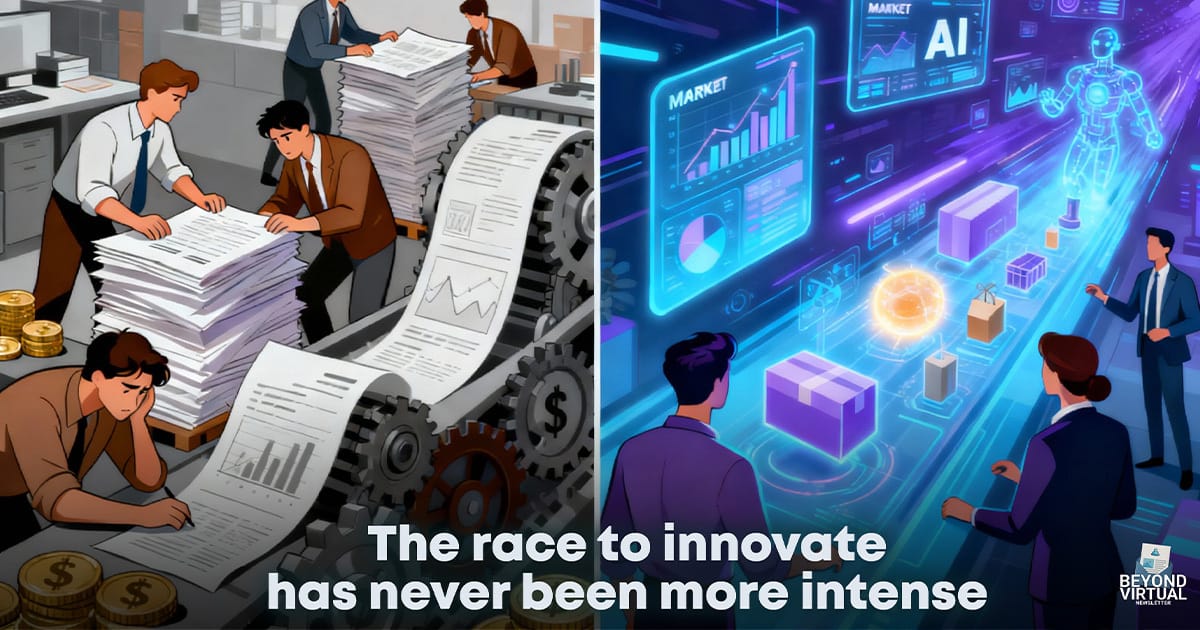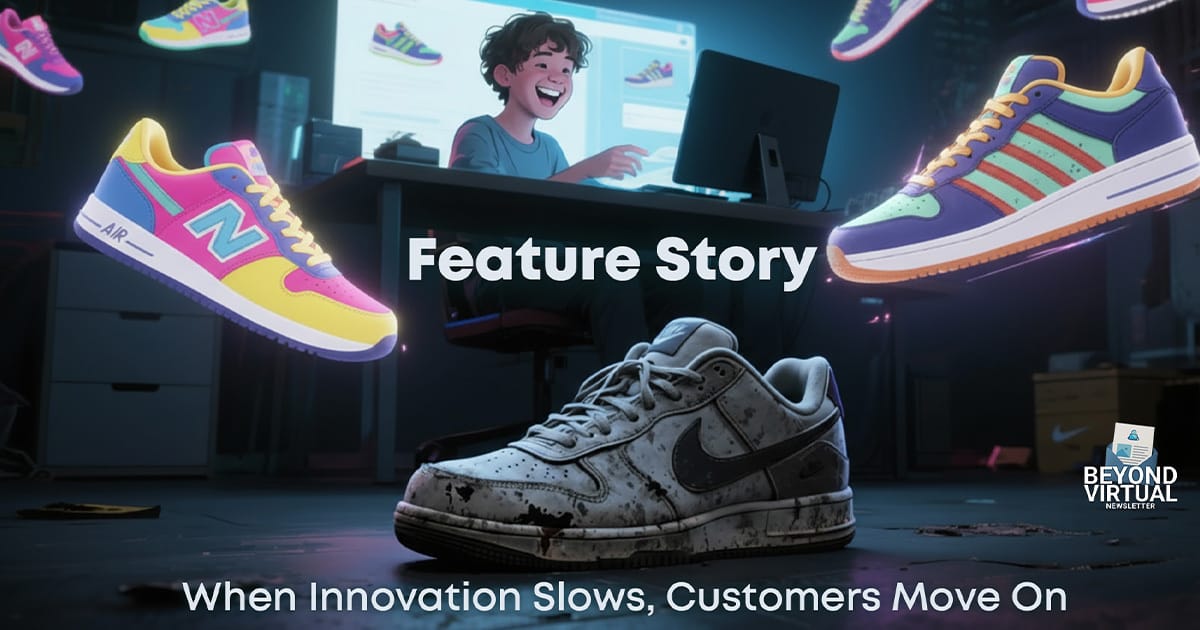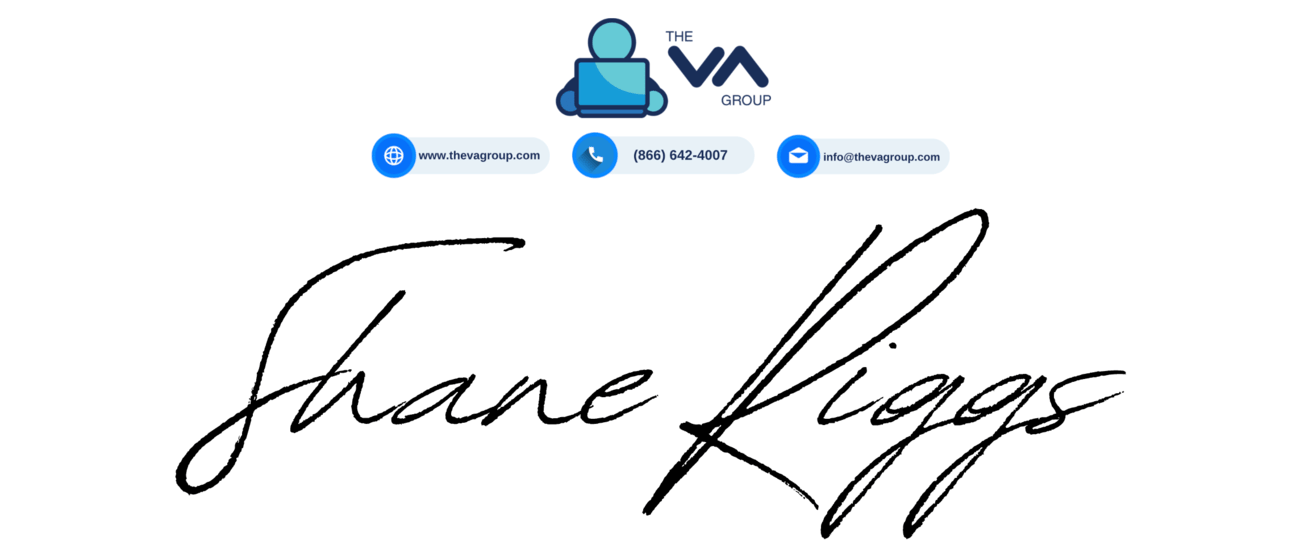- The VA Group
- Posts
- AI and Product Development
AI and Product Development
Big companies like New Balance, Corbion, and Adidas have ONE thing in common, and some competitors tend to miss this.

BEYOND VIRTUAL
The race to innovate has never been more intense. Businesses are now earning nearly twice as much from products and services that didn’t even exist a year ago. Meanwhile, companies that fail to innovate quickly risk falling behind competitors. The challenge is clear: traditional product development methods are slow, expensive, and often fail to deliver.
That’s where AI comes in. Rather than relying on guesswork or long cycles of trial and error, AI helps teams spot market trends, anticipate customer needs, and design smarter products from the very start. The result? Less wasted time and resources, faster launches, and a much higher chance of creating products that succeed.
Feature Story
When Innovation Slows, Customers Move On

Nike recently found itself in a sales slump. Not because the brand lost its appeal, but because rivals like New Balance and Adidas were quicker to launch fresh products and collaborations. They kept customers excited with a steady stream of new ideas, while Nike’s slower pace left space for competitors to capture attention. It’s a clear reminder that speed matters as much as quality products.
The traditional product development process is part of the challenge that makes keeping up with the pace of customers' interests impossible. It's resource-intensive, time-consuming, and often based on educated guesses rather than solid data. Companies face two critical problems: first, when those guesses are wrong, millions of dollars are wasted. Second, even successful products can take so long to develop that by launch time, customer preferences have already shifted.
It’s a costly game of trial and error, and these days, customers don't wait.
This isn’t just about sneakers. The same pressure exists in the service industry. Business owners stopped searching for traditional VAs who only managed calendars and emails. Instead, they wanted assistants who could integrate automation into their processes while still handling the human side of business - the empathy, relationship-building, and judgment calls that AI can’t master yet.
In other words, innovation isn’t optional. Just as Nike learned that waiting too long to evolve comes with a cost, service providers like us must adapt quickly when client expectations change. For us, AI was not just a new tool; it became both the means and the end, streamlining operations while helping us deliver deeper, more human value to the businesses we support.
Visionary Voices
Innovate Or Fall Behind

Google’s CEO, Sundar Pichai, put it simply: “The way you stay ahead is by innovating relentlessly.” In today’s market, standing still isn’t just risky, it’s a recipe for falling behind.
Research backs this up. Companies with a strong innovation culture are 3.5 times more likely to outperform their peers. The challenge? Product development is rarely straightforward.
It’s not just about coming up with fresh ideas. Many companies struggle to transform their data into something truly valuable, whether that means enhancing efficiency, improving product quality, or anticipating customers' future needs. Traditional development cycles take years and absorb huge amounts of resources, leaving plenty of room for costly failures.
So, what changes the game? For many, the answer is AI.
Already, 44% of businesses say AI helps them make better decisions and avoid mistakes that would otherwise stall innovation. By cutting through guesswork, AI reduces time-to-market by 20 to 40% and lowers development and testing costs by 20 to 30 % In other words, companies can move faster, with more precision, and without draining resources.
Take Corbion, a Dutch food and biochemicals company. Traditionally, identifying new bioactives in nature, a process crucial for creating healthier and more sustainable products, took up to three years. By using Forager, an AI-powered algorithm, they have cut that down to just three months, drastically accelerating the pace of discovery.
Or consider BMW, which uses AI to enhance its vehicle inspections. By automating quality checks with machine learning, BMW has increased precision while saving the company more than $1 million annually. Faster, more accurate inspections mean fewer defects, better cars, and a competitive edge that directly impacts the bottom line.
These are not isolated examples; they are signals of a broader shift. AI is no longer a side tool; it is becoming the backbone of innovation strategies across industries. The companies that adopt it are not just streamlining processes; they are building the kind of agility needed to keep up with customers who expect something new around every corner.
The Trend
AI’s Impact on Product Development: Speed, Innovation, and ROI

If innovation is the lifeline of growth, speed is what keeps it flowing. Traditional product development has always been slow and expensive. But as we saw with companies like BMW and Corbion, AI is switching things up. It shrinks timelines, reduces risk associated with experimentation, and 6makes it easier to turn bold ideas into tangible results. For both product-based and service-based businesses, this shift is more than a technical upgrade; it’s a new way of competing.
What AI Actually Does
It Spots Patterns Humans Miss: Think of AI like having someone who can read thousands of reports in minutes and tell you exactly what matters. Corbion, a food company, used to spend three years searching for natural ingredients to make healthier products. With AI helping them, that same work now takes three months. That's going from years to weeks.
It Catches Mistakes Early: BMW uses AI to check their cars for defects during production. The AI spots tiny problems that human eyes might miss, and it does it faster. The result? Better cars, fewer repairs, and they're saving over a million dollars every year doing it.
It Predicts What Customers Want Next: Instead of guessing what people might like, AI looks at what they're already doing, what they buy or skip, what they talk about, and helps companies figure out what to make next. Less gambling, more informed decisions.
What This Means in Real Numbers
Companies using AI smartly are seeing real changes:
Products get to market 20-40% faster
Development costs drop by 20-30%
Almost half of businesses say they make fewer expensive mistakes
Companies that innovate well perform 3.5 times better than those that don't
The takeaway? AI helps you move faster, waste less, and make better choices about what to create.
Applying AI to Your Business
Product-Based Companies: AI can help identify which features are most likely to succeed, optimize supply chains, and streamline prototyping. From identifying materials to predicting demand, AI reduces guesswork while shortening time-to-market.
Service-Based Companies: AI doesn’t just apply to physical products. Service providers can use AI to design better customer experiences, predict client needs, and automate routine operations.
Reality Check
AI has incredible potential to accelerate product development, improve quality, and boost ROI. But the results aren’t automatic. A recent MIT research shows that only 5% of companies see measurable results from AI. That is not to say that the problem is AI itself. Rather, it’s in its application and integration. Without a clear strategy and practical application, all the data and insights will not make a dent. Companies that approach AI thoughtfully, aligning it with specific business objectives and processes, are the ones that actually see measurable impact in their businesses.
What This Means for Your Business
Here's the bottom line: whether you make physical products or provide services, AI can help you:
Get new offerings to market faster without sacrificing quality
Make smarter decisions based on what's actually happening, not just gut feelings
Understand what customers need before your competitors do
Stop wasting time and money on things that don't work
AI is already changing how smart companies innovate. The question is whether you'll be one of them.
Looking Ahead
In our next newsletter, we're diving into the practical side. We'll show you exactly how companies are using AI successfully, what mistakes to avoid, and how to tell if it's actually working for you. This is where theory meets practice, and abstract concepts have real-world effects.
A Final Note
Everything moves faster these days - markets, technologies, and consumer interests. To stay ahead of the curve, companies need to spot trends early, anticipate customer needs, and be ready even before the market catches up.
AI has become a powerful ally in this process. It helps businesses analyze signals, predict customers' needs, and act with speed and precision. The outcome is smarter product development, more relevant offerings, and a competitive edge that keeps customers engaged and loyal.
Until next time,

Are you ready to see great changes in your business with the help of AI? Here’s HOW WE CAN HELP YOU.
We’ve helped THOUSANDS OF BUSINESS OWNERS scale their businesses with our VA+AI co-pilot model. Traditional methods work, yes. But can they keep up?
Are you ready to take your business to the next level? Click here and explore your options.